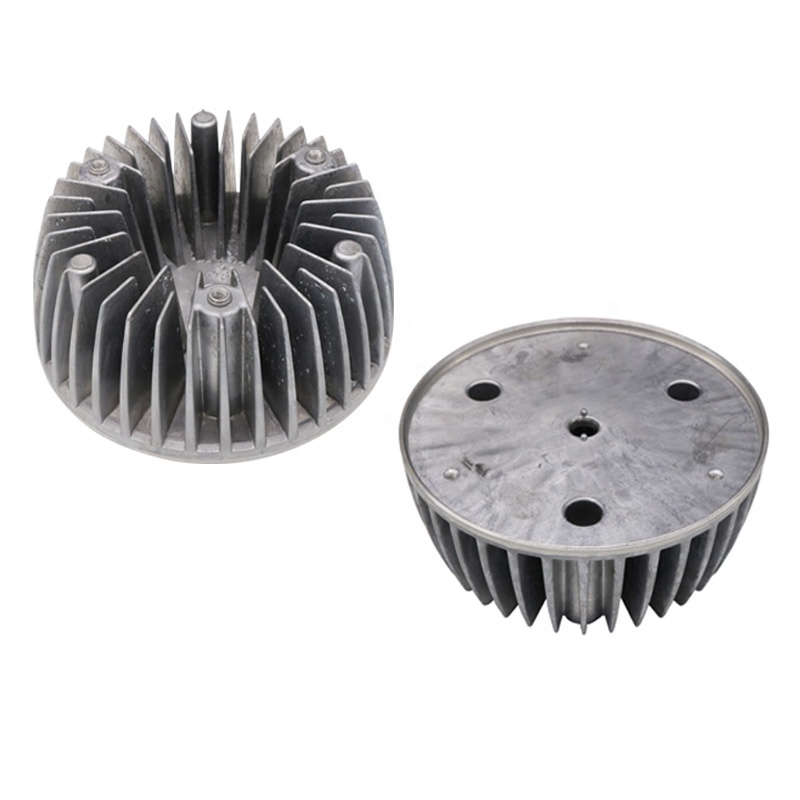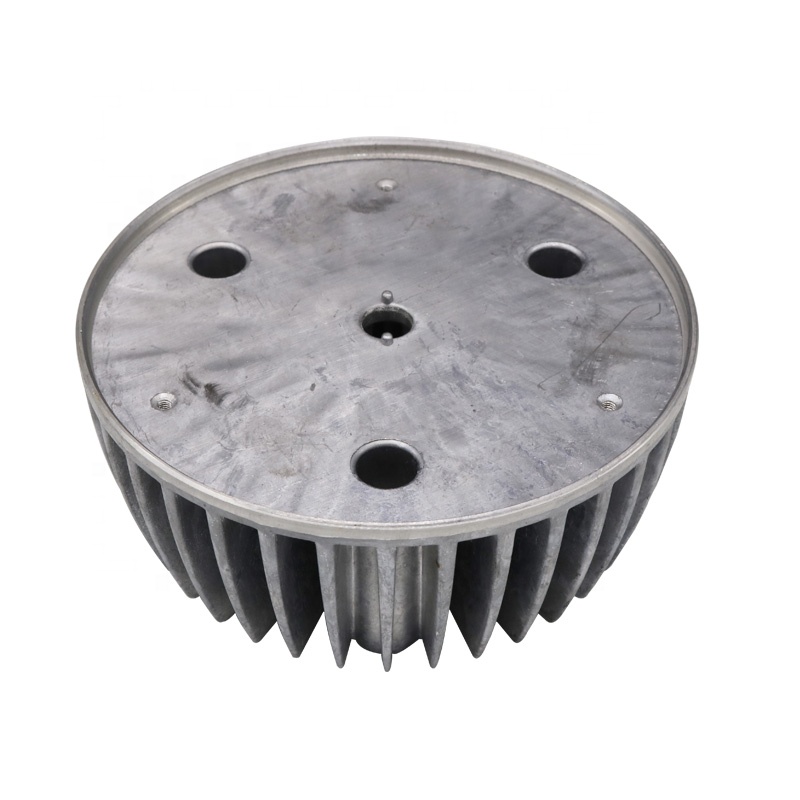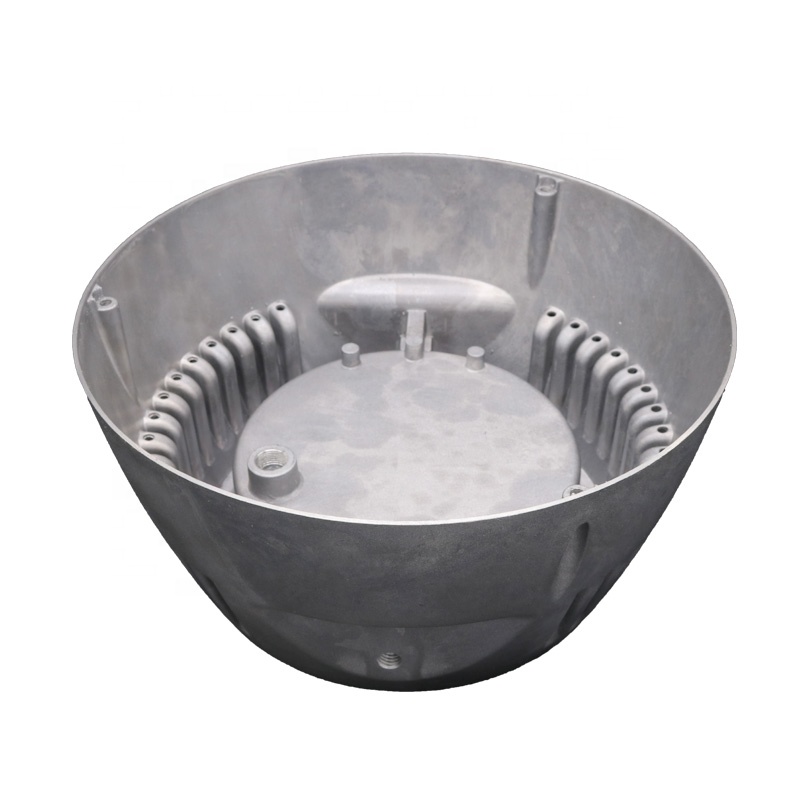ALPHA (CHINA) SUPPLY CO.,LTD |
|
Cold Forging Cast Aluminum Heat Sink Easily Electrically Grounded
Heatsink parts or heat sinks made in aluminum draw heat from PC boards and have a thermal conductivity CGS of 0.23. The electrical conductivity of aluminum die cast heat sink parts is 27 percent of copper standard. Aluminum heat sinks are also very light, having a specific gravity of about 0.10 pounds per cubic inch. Some aluminum heat sinks have external threads cast into place. The maximum threads per inch die cast into place is 24 TPI.
Aluminum heat sink parts have another advantage. They are electrically conductive. This benefits the manufacturers in three ways:
Aluminum heatsink parts do not need added cost plating in copper.
Because the parts are electrically conductive, they can easily be electrically grounded.
Aluminum Heatsink parts are used for RF and EMI shielding..
Aluminium die casts are light in weight. In contrast to other die cast materials, aluminium can resist extremely high operating temperatures. Their strength, flexural rigidity and resistance to corrosion guarantee excellent heat dissipation. Due to its excellent shielding properties and light weight, aluminium is the preferred material for electronic housings.
Heat sinks remove heat from parts and components in electronic applications. Aluminum heatsinks are designed in a way that requires less machining than other manufacturing processes. The cooling fins can be manufactured at the same time as the mounting holes. Heatsink parts are made with all features necessary for cooling electronic components and to mount the heat sinks on the printed circuit board (PC board). Aluminum heat sinks have a high dimensional stability. Heat sink production begins as soon as the tooling is produced.. Heatsinks look good as raw parts or can be anodized or powdercoated.
Technical Information about Die Casting
Die Casting, A Description of the Die Casting Process- Die casting is a manufacturing process in which molten metal is injected, under considerable pressure, into a hardened steel die or also called die casting mold. Dies are often water-cooled. The die is then opened, and the die casting parts are ejected (many times thousands of die casting parts each day, sometimes only a few hundred die casting parts). Once the die casting tooling is paid for, die casting parts are a very inexpensive aluminum part manufacturing process.
Compare High pressure die casting to Other Manufacturing Processes
Forgings
Compared with forgings, die casting can be more complex in shape and have shapes not forgeable, can have thinner sections, be held to closer dimensions, and have coring not feasible in forging.
Plastic Injection moldings
Compared with plastic injection moldings, die casting are stronger, stiffer, more stable dimensionally,
more heat resistant, and are far superior to plastics on a
properties/coat basis. They help prevent radio frequency and
electromagnetic emissions. For chrome plating, die castings are
much superior to plastics. Die castings have a high degree
permanence under load compared to plastics, are completely
resistant to ultra-violet rays, weathering, and stress-cracking in
the presence of various reagents. Manufacturing cycles for
producing die castings are much faster than for injection moldings.
Extrusions
Compared to extrusions, die casting can be produced faster and more
net shape. Features and depressions on the sides, tops and bottoms
can be created in one operation. There is less waste using die
casting than extrusion. Holes can be cast in place to save
additional machining cost.
Stampings
Compared with stampings, one die casting can often replace several
parts. Die casting frequently require fewer assembly operations,
can be held within closer dimensional limits, can have almost any
desired variation in section thickness, involve less waste in
scrap, and are producible in more complex shapes. Die castings can
be made in many shapes not producible in stamped form.
Screw Machine Parts
Compared with screw machine products, die castings are produced
more rapidly, involve much less waste in scrap, can be made into
shapes that are difficult or impossible to produce from bar or
tubular stock, and may require fewer operations.
Sand castings
Compared with sand castings, die castings require much less machining, can be made with thinner walls, can have all or nearly all holes cored to size, can be held within much closer dimensional limits, and are produced more rapidly in dies which make thousands of die castings without replacement. Die castings do not require new cores for each casting, are easily provided with inserts die cast in place, have smoother surfaces and involve much less labor cost per casting.
Permanent mold castings
Compared with permanent mold castings, die castings can be made to
closer dimensional limits and with thinner sections and holes can
be cored to near net shape. Die castings are produced at higher
rates with less manual labor, have smoother surfaces, and usually
cost less per die casting.
Computer parts use heat sinks on their printed circuit boards.
Communication companies use heat sinks for microwave, cellular, and
satellite components.
Laser components use heat sinks in their products.
Motor housings use heat sinks in their products.
Automotive parts use many types of heat sinks to cool oil and
electronics.
Lighting parts use heat sinks to cool fixtures or lighting housings.
If can be customized
We can sign NDA(Non-disclosure Agreement) with you if you need.
Supplying Capacity: 100,000pcs monthly; Small orders are welcome.
Quality Control
Professional QC inspector
Strict testing process and test standard
Routing inspect & full inspect in key processing
Test equipment:Vernier Caliper,Micrometer,Height Gage,Hardness Tester,Visual measuring system,CMM,Profile Projector.
FAQ
What kind of trade terms can you do?
EX-WORKS,FOB,CIF,DDP DDU.
What is your terms of payment?
50% Mold cost deposit,balance mold cost +50% production cost paid
when samples confimed,Balance production cost paid against copy of
B/L. We accept T/T.
Do you support OEM ?
Yes, we can produce by technical drawings or samples.
How about your delivery time?
Generally, it take 40 days, but speeding up services are available
if for certain orders.
Product Pictures




